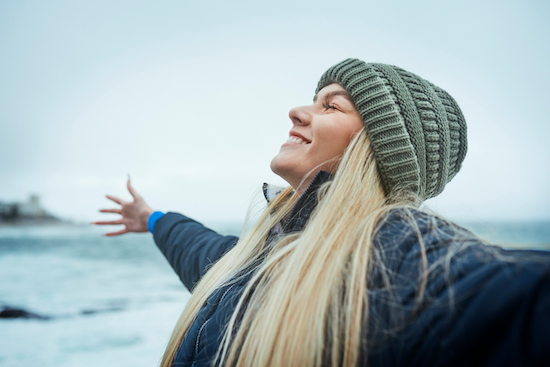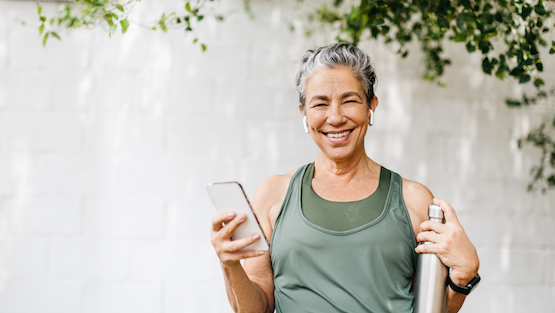Practicing yoga at home can be just as sweet as going to a class, but it helps to have the right props. And while it’s always nice to have a variety of yoga gear available, you can recreate most of the set ups from group class with just a few props or a little creativity.
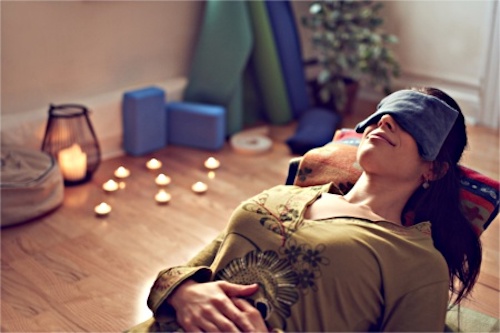
4 basic yoga props
You likely already own a yoga mat, so consider adding these basic props, or other items you can use instead, for an even better yoga practice:
- One or two blocks
- One or two blankets
- Bolster
- Strap
Blocks
Blocks (sometimes called bricks) are really useful and versatile — and inexpensive too. So I definitely recommend having one or two for your home practice. Use them in the following ways:
- Place them under your hands for lunges or standing forward folds to bring the ground closer or support the shape of your pose.
- Sit on one or two in seated positions.
- Use one to put your forehead on in seated forward folds.
- Place one under your sacrum for supported Bridge Pose (Setu Bandha Sarvangasana).
- Use two blocks for supported Fish Pose (Matseyasana) with one under the shoulders and the other beneath the base of the skull, like an “equal sign” or in a “T” shape with a few inches between each block.
Blocks come in foam, cork, wood or even bamboo. The foam ones are nice because they are softer on the body, but cork and wood are great because they are very stable and sturdy.
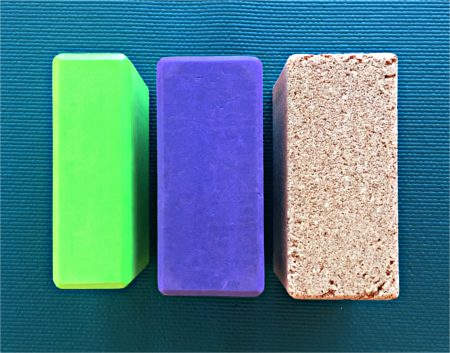
Block sizes range in thickness from 3”-5.” The 3” skinny blocks are light, easy to store or travel with, and good for basic block use. Thicker and sturdier blocks are better for restorative shapes where you can use them to prop up a bolster or support the weight of your body for longer holds.
You could use a substitute but blocks are totally worth the purchase. Many studios sell props at a discount or you can find them online for $8-$25, depending on the make and material.
Blankets
A blanket can be another friend when doing yoga. Folded, a blanket can cushion the knees or help you sit taller in seated postures. Roll up your blanket and recline over it for backbends. Place it under your knees in Corpse Pose (Savasana) or use it for a pillow for your head. Or just use a blanket to cover up and stay cozy while you restore.
Most yoga-specific blankets are made with wool or cotton blend and open to be about 78” x 54”. They’re usually very colorful and cost $13-$25.
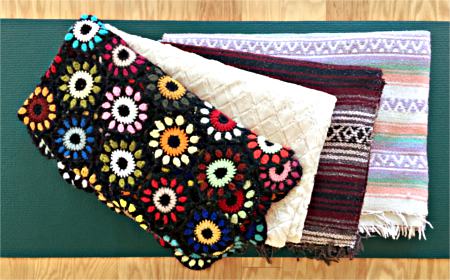
But you can just as easily use a twin-sized blanket, quilt, or even your old couch afghan! As long as your blanket provides ease, support and warmth, you should be all set with whatever you choose.
Bolsters
Bolsters support the body in more restful and restorative shapes whether you recline backwards or forwards over them. Use one to support your torso in a forward twist or for your legs in a reclining twist. To feel secure and grounded in Savasana, place a bolster over your legs or pelvis, or drape your legs over one when lying on your back.
Like all of us, bolsters come in different shapes and sizes — round or rectangular edges, thick, thin, cushiony, stiff, etc.
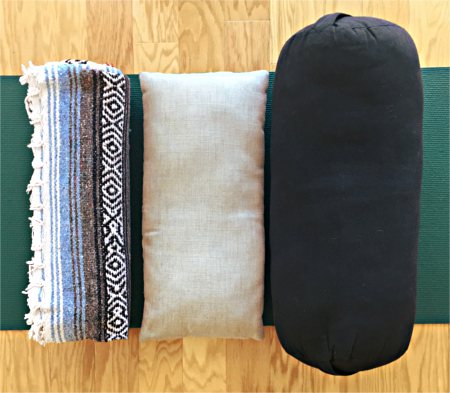
If your home practice involves restorative postures, you’ll never regret having a bolster handy. But you can still create a bolster from household pillows, small couch cushions, rolled up or folded blankets, or towels.
To purchase your own bolster, expect to pay $25-$85, depending on size, material (both inside and outside), and brand.
Straps
A strap, also referred to as a belt, can be useful to hold together the hips or thighs in some restorative shapes. You can put one around the bottoms of your feet to make it easier when stretching the legs in seated or reclining postures. A strap can also assist a variety of upper body stretches, shoulder work, and arm binds.
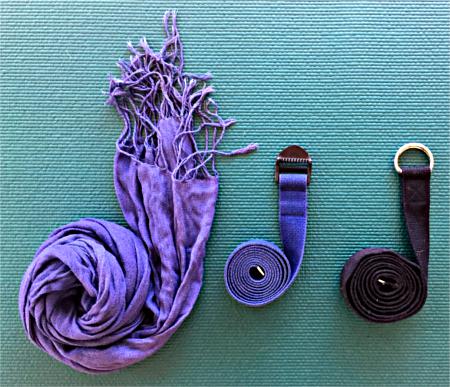
Straps come in different lengths — 6’, 8’ or 10.’ Some have metal D-rings on one end for creating a loop, while others have a plastic buckle. Expect to spend $6-$12.
You can also use a long belt or scarf. If I don’t have my strap nearby, I often use a long, thin scarf to stretch my legs in some reclining poses. It works great!
Keep your yoga practice simple or go all out — but definitely do it!
Your yoga practice is important. And the fact that you’re willing to practice at home on your own deserves much recognition. Sometimes it’s hard to feel motivated, but don’t let the lack of official yoga props stop you from doing yoga — ever.
Either straight-up purchase the props you think you’ll need, just improvise with any old pillow, blanket or scarf. So go on — roll out your mat and get started!
 | Want to learn how to slow down and find calm? Try Kelley’s recommendations for yoga poses for stress relief. |







